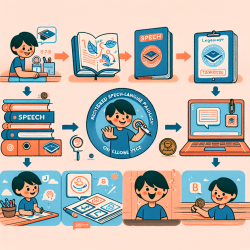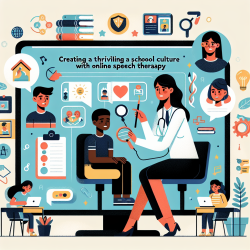In the realm of special education, understanding the environment in which students learn is crucial. However, as highlighted in the research article "Going beyond Environment to Context: Leveraging the Power of Context to Produce Change," it's essential to expand our focus from merely the environment to a broader concept of context. This shift can significantly impact how we approach education for students with disabilities, ultimately enhancing their quality of life and educational outcomes.
The Importance of Context in Education
The traditional concept of "person-environment fit" has been instrumental in understanding disabilities as an interaction between an individual and their environment. Yet, this model falls short in capturing the full complexity of factors influencing human functioning. The research by Schalock et al. suggests a move towards a "context paradigm," which considers multilevel, multifactorial, and interactive elements that surround individuals.
A Multidimensional Model of Context
This model identifies three critical components:
- Multilevel: Encompasses micro (immediate social settings), meso (community and organizational support), and macro (policy and cultural influences) levels.
- Multifactorial: Considers factors like age, culture, and family structure that influence outcomes but are not typically manipulated.
- Interactive: Focuses on how these levels and factors interact to influence personal outcomes.
Implementing Context-Based Change Strategies
For practitioners in special education, understanding and applying these concepts can lead to more effective strategies. Here’s how educators can leverage this model:
- Identify Desired Changes: Collaborate with students and families to identify needed changes that align with personal goals.
- Analyze Interactions: Examine how different contextual variables interact and influence desired changes.
- Develop Strategies: Use this analysis to develop targeted interventions that address specific contextual factors.
- Evaluate Outcomes: Continuously assess the effectiveness of implemented strategies to ensure they meet desired educational outcomes.
The Benefits and Challenges
This approach offers a comprehensive framework for understanding the complexities of students' lives. It encourages educators to explore contextually-based factors that influence educational success. However, it also presents challenges such as requiring a broader perspective beyond traditional models and necessitating collaboration among multiple stakeholders.
The advantages include a more holistic understanding of student needs and the potential for significant improvements in quality of life and educational outcomes. By overcoming barriers such as complexity in analysis and implementation, educators can drive meaningful change.
For those interested in delving deeper into this transformative approach, further research is encouraged. To read the original research paper, please follow this link: Going beyond Environment to Context: Leveraging the Power of Context to Produce Change.










